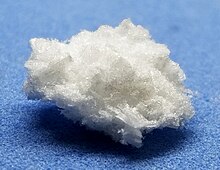Pyrogallol
It is produced in the manner first reported by Scheele in 1786: heating gallic acid to induce decarboxylation.This conversion can be used to determine the amount of oxygen in a gas sample, notably by the use of the Orsat apparatus.It experienced a revival starting in the 1980s due largely to the efforts of experimenters Gordon Hutchings and John Wimberley.This formulation resolved the consistency issues, and Hutchings found that an interaction between the greenish stain given to film by pyro developers and the color sensitivity of modern variable-contrast photographic papers gave the effect of an extreme compensating developer.[3] Pure pyrogallol was found to be extremely genotoxic when inserted into cultured cells, but α amylase proteins protect against its toxicity during everyday exposure.


Preferred IUPAC nameCAS NumberChEMBLChemSpiderECHA InfoCardEC NumberPubChemRTECS numberUN numberCompTox DashboardSMILESChemical formulaMolar massDensityMelting pointBoiling pointRefractive indexCrystal structureMonoclinicSpace groupLattice constantFormula unitsGHS labellingPictogramsHazard statementsPrecautionary statementsstandard stateorganic compoundisomersbenzenetriolsScheelegallic acidtanninpotassium hydroxidesulfonic acidshair dyeingantisepticoxygenOrsat apparatusdeveloping agentHydroquinoneEdward WestonJohn WimberleyKodalkvariable-contrast photographic paperscompensating developertriethanolaminealkaliascorbic acidphenidonecallier effectgenotoxicinto cultured cellsα amylase proteinsCatecholGallacetophenoneSyringolCRC Handbook of Chemistry and PhysicsCRC PressUllmann's Encyclopedia of Industrial Chemistry